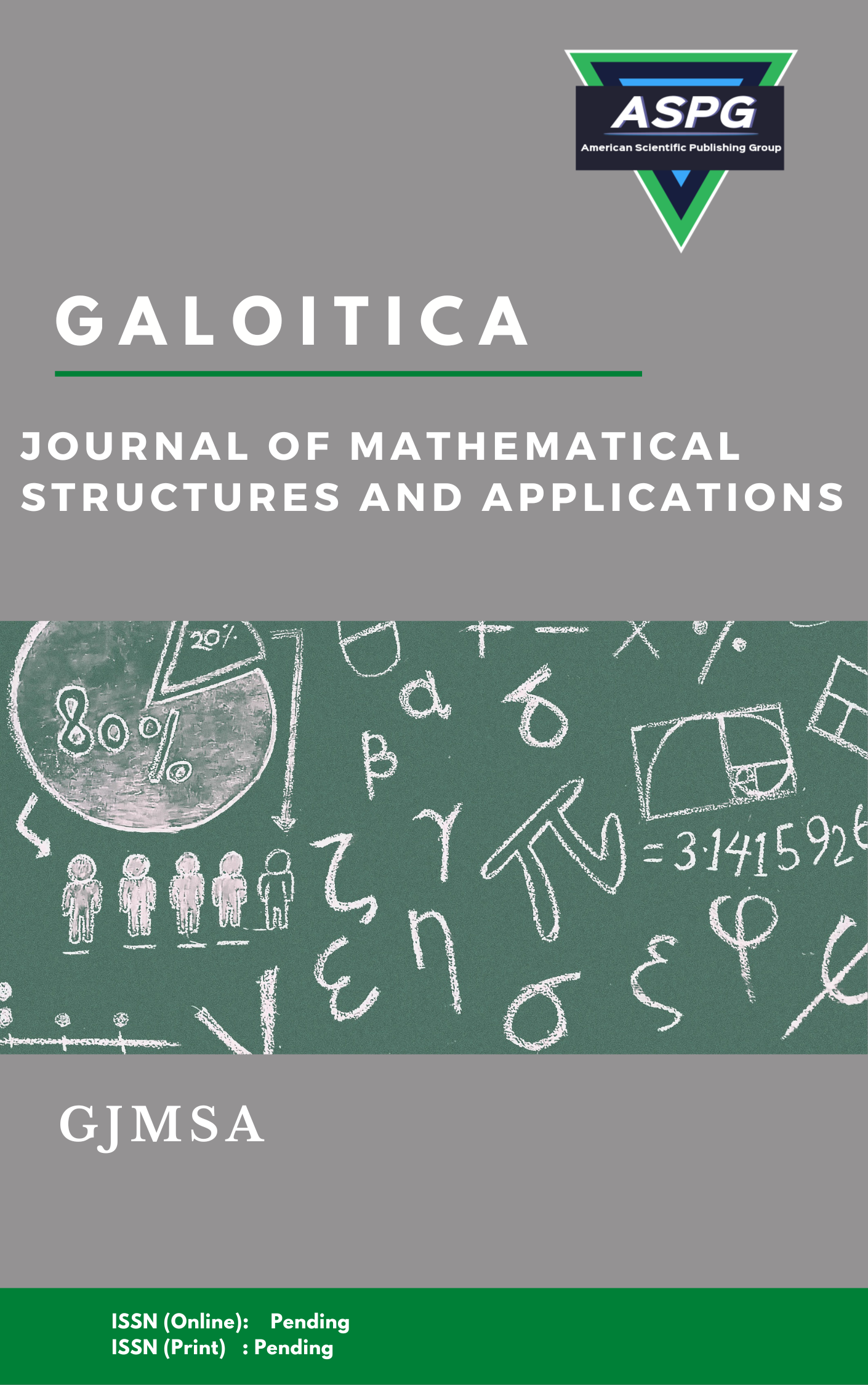

This paper is devoted to find the solution of the Vanishing Neutral Differential Equations (VNDEs), where we review the ARCHI code for solving neutral differential equations, and then an improvement of this code will be presented in this paper to solve problems of VNDEs. This improvement is done by suggesting a new hybrid method of special interpolants with iteration procedure of RK method. We will analyze the convergence of the suggested new method by proving the following criteriaBn(t)≤TH(c1+(c2L3)/(1-L3 ))exp(LT/(1-L3 ))Where the solution is convergent , we have and when and the derivative of the solution is also convergent for VNDEs.
Read MoreDoi: https://doi.org/10.54216/GJMSA.0110101
Vol. 11 Issue. 1 PP. 01-11, (2024)
In this paper, we derive the Bessel's equation of complex order (n + i) from the classical well-known Bessel's equation. In addition, we generalize that recurrence relation from Bessel's equation of order (n) to Bessel equation of complex order (n + i). On the other hand, we present an algorithm to solve the novel complex order equation with many illustrated examples that explain the validity of our approach.
Read MoreDoi: https://doi.org/10.54216/GJMSA.0110102
Vol. 11 Issue. 1 PP. 12-24, (2024)
Let u and v be any two distinct vertices in a connected graph G. A container C(u,v) is a set of internally disjoint u - v paths. The width of C(u,v) is denoted by w or w(C(u,v)), it is equal to , and the length of is the length of the longest u – v path in C(u,v). Then, for a given positive integer w, the width distance between any two distinct vertices u and v in a connected graph G is define by:dw (u,v)=min/(C(u,v)) l(C(u,v)) , where the minimum is taken over all containers C(u, v) of width w.In this paper, we find the Hosoya polynomials and Wiener indices of the join of two special graphs such as bipartite complete graphs, paths, cycles, star graphs and wheel graphs with respect to the width distance.
Read MoreDoi: https://doi.org/10.54216/GJMSA.0110103
Vol. 11 Issue. 1 PP. 25-34, (2024)
A function f:V(G)→{0,1,2} is called a Perfect Italian dominating function (PIDF) of a graph G=(V,E) if ∑_(v∈N(u)) f(v)=2 for every vertex u∈V(G) with f(u)=0. The weight of an PIDF is w(f)=∑_(v∈V) f(v) . The minimum weight of all Perfect Italian dominating functions that can be conducted on a graph G is called the perfect Italian domination number of G and is denoted by γ_I^p (G). In this paper, we study the problem on different graph classes. We determine the perfect Italian domination numbers of the circulant graphs C_n {1,2} for n≥5 and give upper bounds for γ_I^p (C_n {1,3}) when n≥7. We also find this parameter for generalized Petersen graph P(n,2) when n≥5. We determine γ_I^p (G) of strong grids P_2⊠P_n and P_3⊠P_n for arbitrary n≥2, then we introduce an upper bound for γ_I^p (P_m⊠P_n ) when m,n≥2 are arbitraries. Finally, we determine the perfect Italian domination number of Jahangir graph J_(s,m) for arbitrary s≥2 and m≥3.
Read MoreDoi: https://doi.org/10.54216/GJMSA.0110104
Vol. 11 Issue. 1 PP. 35-46, (2024)
In this paper, we study of the Markov- Bernstein inequality of a complex polynomial with exponential weight functions e^(-r^2 z/2) on the domain ├]-∞,+∞┤[, we also study the Integral Markov-Bernstein inequality for the algebraic polynomials of degree 2m and degree m with algebraic weight functions on the domain [1,+∞┤[of type (1/x^2 )^(-n), and on the domain ├]0,+∞┤[of type (1/t)^(-n).
Read MoreDoi: https://doi.org/10.54216/GJMSA.0110105
Vol. 11 Issue. 1 PP. 47-53, (2024)